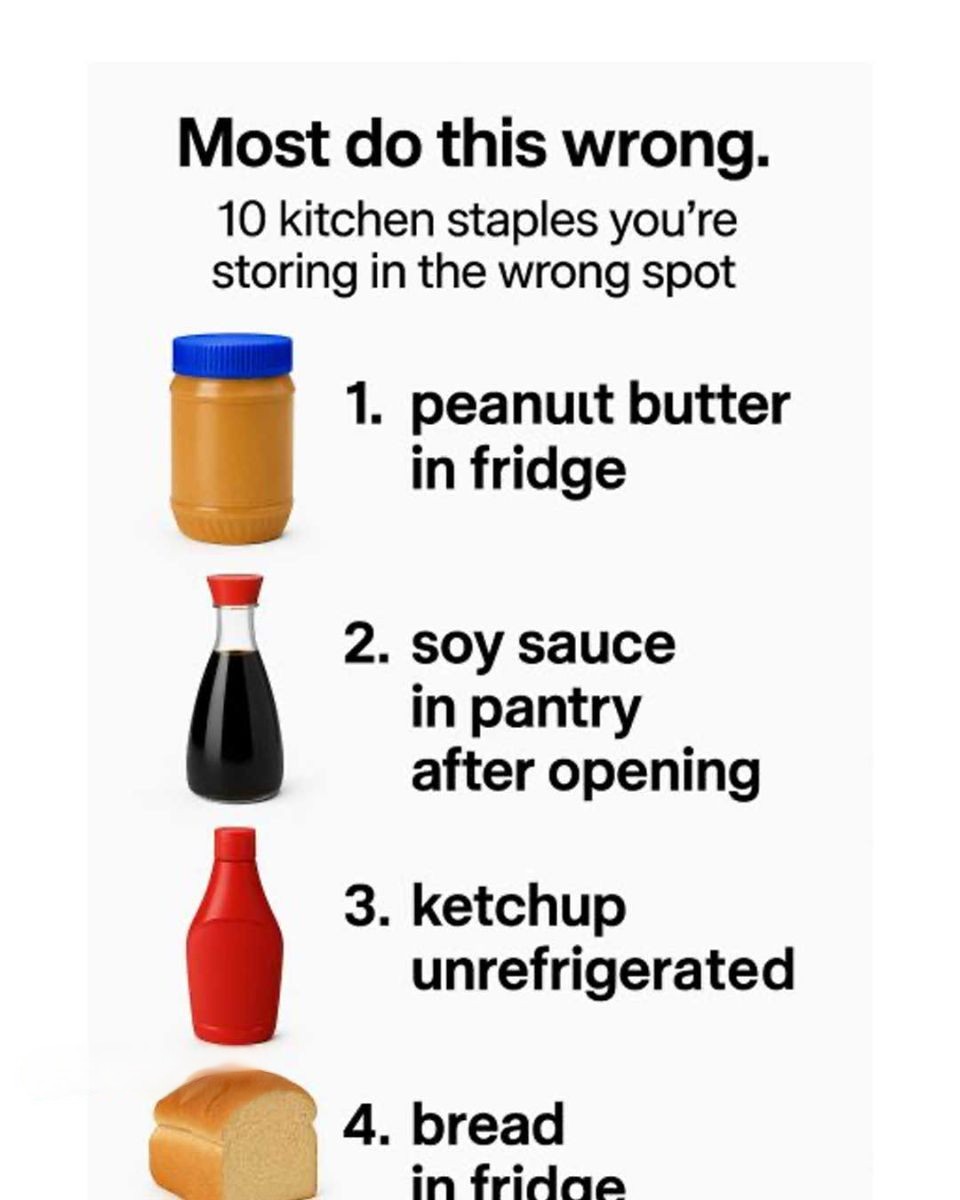Print this recipe
In the hustle and bustle of everyday life, many of us are guilty of not giving much thought to where we store our kitchen staples. We often follow habits passed down from family or simply stick to what seems convenient, but improper storage can affect the taste and longevity of our food. Understanding the right conditions for storing certain foods can make a significant difference in preserving their quality and flavor.
From pantry essentials like peanut butter and olive oil to fridge regulars like ketchup and soy sauce, each item has its own set of optimal storage conditions. This guide delves into ten common kitchen staples and clears up the confusion about where they should really be stored. You might discover that you’ve been storing some of your favorite foods incorrectly all along.
1. Peanut Butter: Keep It Out of the Fridge
Peanut butter is a staple in many households, beloved for its creamy texture and versatility. However, storing peanut butter in the refrigerator can lead to an undesirable hardening of the spread, making it difficult to spread on breads and crackers. The ideal place for peanut butter is in a cool, dark pantry where it can maintain its creamy consistency.
Most commercial peanut butters contain preservatives that prevent spoilage, allowing them to be safely stored at room temperature for months. Natural peanut butters, which lack these preservatives, can be stored at room temperature for about a month; after this, they should be used up or moved to the fridge if you anticipate keeping them longer, but expect a thicker texture.
2. Soy Sauce: Should It Be Refrigerated?
Soy sauce is a fermented product, which gives it a long shelf life even at room temperature. Its high sodium content acts as a preservative, making it safe to store in a pantry. However, refrigeration can help preserve its flavor over time, especially if you don’t use it frequently.
If you consume soy sauce regularly, keeping it in a cool, dark cupboard is perfectly fine. But for those who use it less often, consider keeping it in the refrigerator to maintain its complex flavors for up to two years.
3. Ketchup: Room Temperature or Cold?
Ketchup is another condiment that sparks debate over its proper storage. While restaurants typically store ketchup at room temperature, they also have a high turnover rate, meaning the product is used quickly. At home, it’s generally recommended to store ketchup in the refrigerator after opening.
The acidity of ketchup, thanks to ingredients like vinegar and tomatoes, helps preserve it at room temperature for a while, but refrigeration after opening ensures it retains its quality and flavor for up to six months.
4. Bread: The Fridge Conundrum
Storing bread in the fridge is a common mistake that many make, thinking it will prolong freshness. In reality, refrigeration speeds up the staling process due to retrogradation, where starch molecules crystallize at cooler temperatures, rendering the bread hard and dry.
The best way to store bread is at room temperature, in a breadbox or a paper bag, where it can breathe while reducing exposure to air. If you need to keep bread for more than a few days, consider freezing it. Wrap it tightly in plastic wrap or foil, and then place it in a freezer bag; this way, it can last for several months.
5. Tomatoes: Why the Fridge Is a No-Go
Tomatoes are sensitive to cold temperatures, which can alter their texture and flavor. Refrigeration tends to break down the cell walls of tomatoes, leading to a mealy texture and muted taste.
For the best flavor, store tomatoes at room temperature, away from direct sunlight. A countertop or a pantry is perfect. Only refrigerate tomatoes if they are very ripe and you cannot use them immediately; even then, use them quickly to minimize flavor loss.
Next Page
